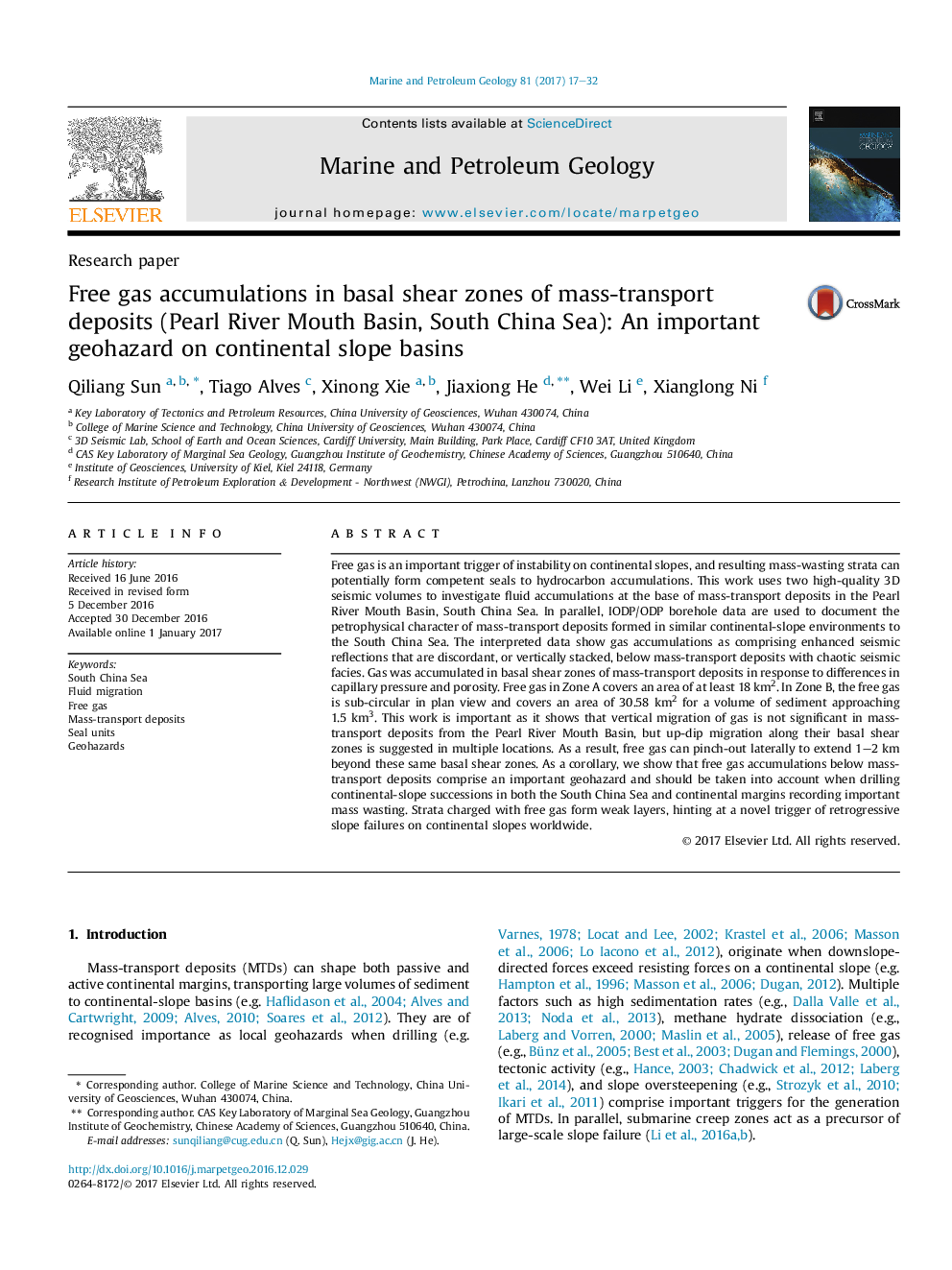| Article ID | Journal | Published Year | Pages | File Type |
|---|---|---|---|---|
| 5782170 | Marine and Petroleum Geology | 2017 | 16 Pages |
Abstract
Free gas is an important trigger of instability on continental slopes, and resulting mass-wasting strata can potentially form competent seals to hydrocarbon accumulations. This work uses two high-quality 3D seismic volumes to investigate fluid accumulations at the base of mass-transport deposits in the Pearl River Mouth Basin, South China Sea. In parallel, IODP/ODP borehole data are used to document the petrophysical character of mass-transport deposits formed in similar continental-slope environments to the South China Sea. The interpreted data show gas accumulations as comprising enhanced seismic reflections that are discordant, or vertically stacked, below mass-transport deposits with chaotic seismic facies. Gas was accumulated in basal shear zones of mass-transport deposits in response to differences in capillary pressure and porosity. Free gas in Zone A covers an area of at least 18Â km2. In Zone B, the free gas is sub-circular in plan view and covers an area of 30.58Â km2 for a volume of sediment approaching 1.5Â km3. This work is important as it shows that vertical migration of gas is not significant in mass-transport deposits from the Pearl River Mouth Basin, but up-dip migration along their basal shear zones is suggested in multiple locations. As a result, free gas can pinch-out laterally to extend 1-2Â km beyond these same basal shear zones. As a corollary, we show that free gas accumulations below mass-transport deposits comprise an important geohazard and should be taken into account when drilling continental-slope successions in both the South China Sea and continental margins recording important mass wasting. Strata charged with free gas form weak layers, hinting at a novel trigger of retrogressive slope failures on continental slopes worldwide.
Related Topics
Physical Sciences and Engineering
Earth and Planetary Sciences
Economic Geology
Authors
Qiliang Sun, Tiago Alves, Xinong Xie, Jiaxiong He, Wei Li, Xianglong Ni,
